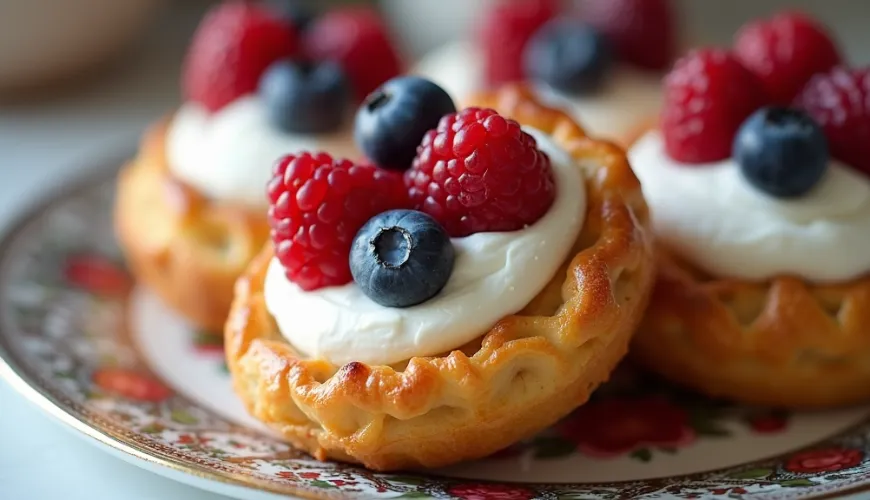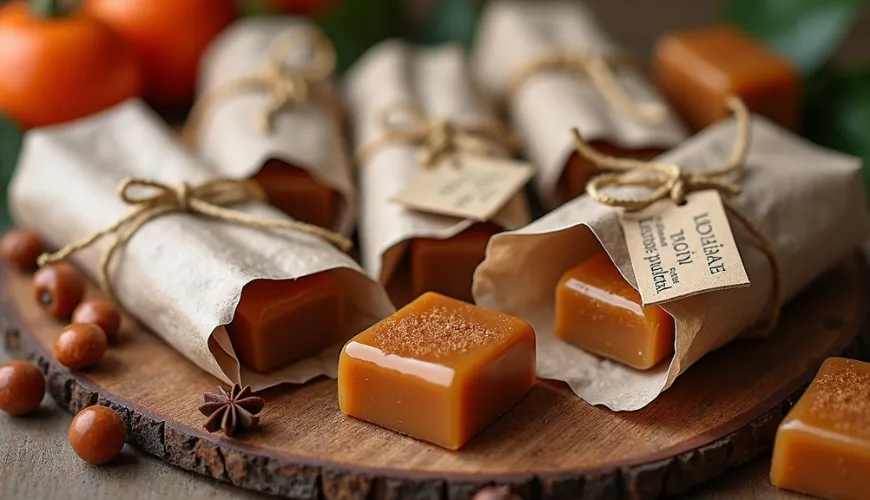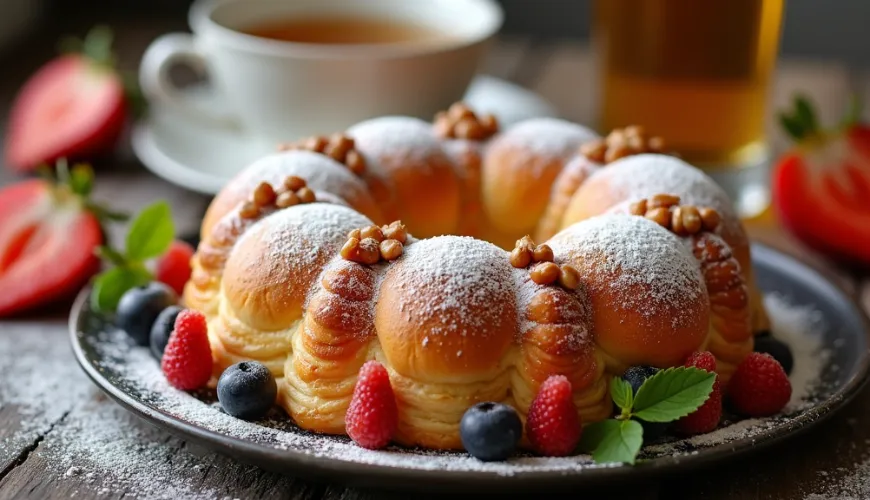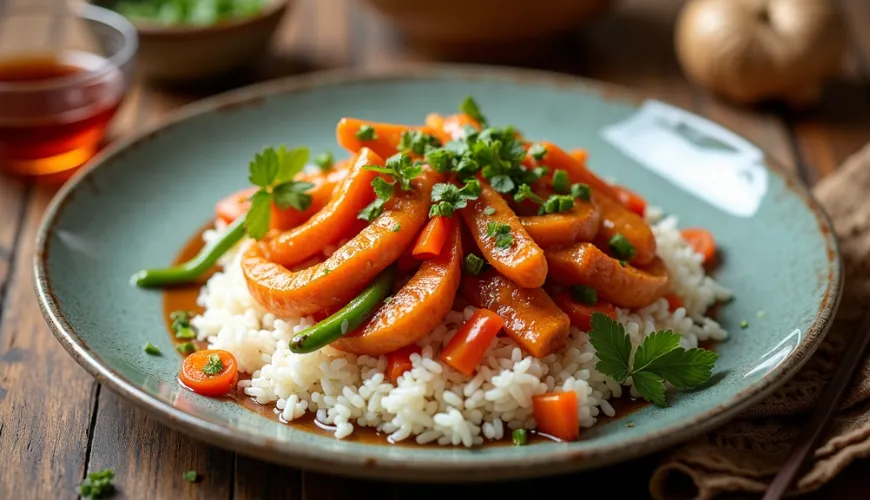
Caramels as a Family Tradition That Delights Both Young and Old

Sweet Delight from the Past - How to Make Authentic Caramels at Home
At first glance, small, unassuming squares. But once they melt on your tongue, they take you back to childhood when grandma lifted the lid of the tin canister and handed you one of those sweet treasures. Homemade caramels are not just a candy. They are a memory, a tradition, and proof that the greatest magic comes from the simplest ingredients.
In a time when store shelves are laden with industrially produced sweets, more and more people are turning to homemade alternatives. It's not just about taste, but also about knowing exactly what you're eating. Store-bought caramels often contain palm oil, artificial colors, or preservatives. The homemade ones, on the other hand, can be made from quality ingredients, without unnecessary chemicals, and with an added dose of personal care.
The Secret to Perfect Caramels
The basic recipe is surprisingly simple: sugar, cream, and butter. But it is in this simplicity that the masterful art lies. A properly made caramel is soft and creamy but doesn't stick to the teeth. It has a rich, buttery sweet taste with subtle notes of vanilla or honey, depending on what you add. And its aroma? It can create an atmosphere of happiness in the kitchen even before you taste the first piece.
What makes homemade caramels truly exceptional is the ability to experiment. Lovers of the classic stick to the basic recipe, while the more adventurous add sea salt, ground cinnamon, a pinch of chili, or even lavender. Fruit caramels are also popular, bringing a fresh tone to the traditional sweetness – for example, with raspberry puree, orange zest, or plum jam.
Caramel Recipe - Step by Step
Let's imagine you decide to make caramels at home. You only need a few basic ingredients and a bit of patience:
Ingredients:
- 200 g granulated sugar
- 250 ml whipping cream (min. 33% fat)
- 100 g butter
- vanilla extract or vanilla sugar (optional)
- a pinch of salt (if you want caramels with a salty tone)
The process is straightforward but requires attention. First, the sugar is slowly melted in a non-stick pan until it becomes golden amber. Then butter is added, which softens the mixture and enriches it with a buttery tone. Finally, everything is poured with cream and stirred until the mixture thickens. The resulting cream is poured into a mold lined with baking paper and left to harden – ideally overnight. In the morning, just cut it into squares and wrap it in waxed paper or biofilm.
Does it sound simple? Yes, but with caramel, respect is required. Stirring should not be underestimated because burnt sugar will turn bitter and ruin the taste of the entire batch. Sometimes it's alchemy – but with a little practice, you can become a caramel master.
Why Make Homemade Caramels When You Can Buy Them?
You might ask: why bother when I can order a box of caramels with one click? The answer is simple – because the quality and taste of homemade caramels are incomparable. Plus, you have complete control over what goes into them. No coatings from unidentified fats, no additives or flavors. Just honest ingredients that you know.
Homemade production has another advantage – caramels make a great gift. Wrap them in handmade printed recycled paper, add a tag with the recipient's name, and you have a personal gift that warms the heart. In a time when most people buy what they want, something you made yourself is truly appreciated.
One of Ferwer's readers, Mrs. Marie from Brno, wrote: "When I first tried homemade caramels according to your recipe, I was surprised at how easy it was. And the children's reactions! They don't even want the store-bought ones anymore."
Caramel Candies in Unconventional Forms
Czechs love caramels. In childhood, we knew them mainly as soft candies wrapped in colorful cellophane that stuck to the roof of our mouths but had an unmistakable taste. Today, however, this traditional dessert is moving into new dimensions. Modern confectioners create caramel pralines with almond cream, vegan caramels with coconut milk, or caramel bars with hazelnuts.
You can spot them at weddings as a token for guests or as part of "zero waste" St. Nicholas packages. The traditional shape can easily be swapped for hearts, spirals, or squares. And what's more – kids love making them. They help with wrapping, tasting, and decorating. So why not make caramel preparation a family tradition?
Fruit Caramels - A Sweet Surprise
Special attention deserves fruit caramels. These aren't candies with artificial strawberry or "forest fruit" flavor, but real fruit combined with caramel mass. Raspberry puree adds a slightly sour tone, while apricots create a deeper, rounder taste. These caramels are exceptional in their complexity – they're not just sweet, but also refreshing.
In France, caramel with apples and cinnamon is very popular, served with strong black coffee or as part of Christmas dessert tables. Get inspired by foreign recipes and add some experimentation to your caramels – perhaps dried plums soaked in rum, coconut milk, or citrus zest.
Caramels and Sustainability? Yes, They Can Go Together
You might be surprised that even something as "small" as a caramel can have an ecological impact. Industrially produced candies are often packaged in plastic wraps, contain palm oil from unsustainable sources, and are transported halfway around the world.
Conversely, homemade caramels are not only tastier but also more sustainable. You use local ingredients, no excessive packaging, and you can wrap each piece in a compostable wax wrap or recycled paper. Moreover, if you prepare a larger batch and freeze part of it, you avoid waste.
Whether you're looking for a caramel recipe for kids, a sweet birthday gift, or just a nostalgic memory of grandma cooking sugar in a pot, one thing is certain – caramels will never lose their charm. And especially in times when we realize how important it is to slow down and return to our roots, these sweet treasures have their rightful place.
As the famous French chef Jacques Pépin says: "A perfect dessert is not about complexity. It's about taste, texture, and the memory it leaves." And that is the power of one homemade caramel.

